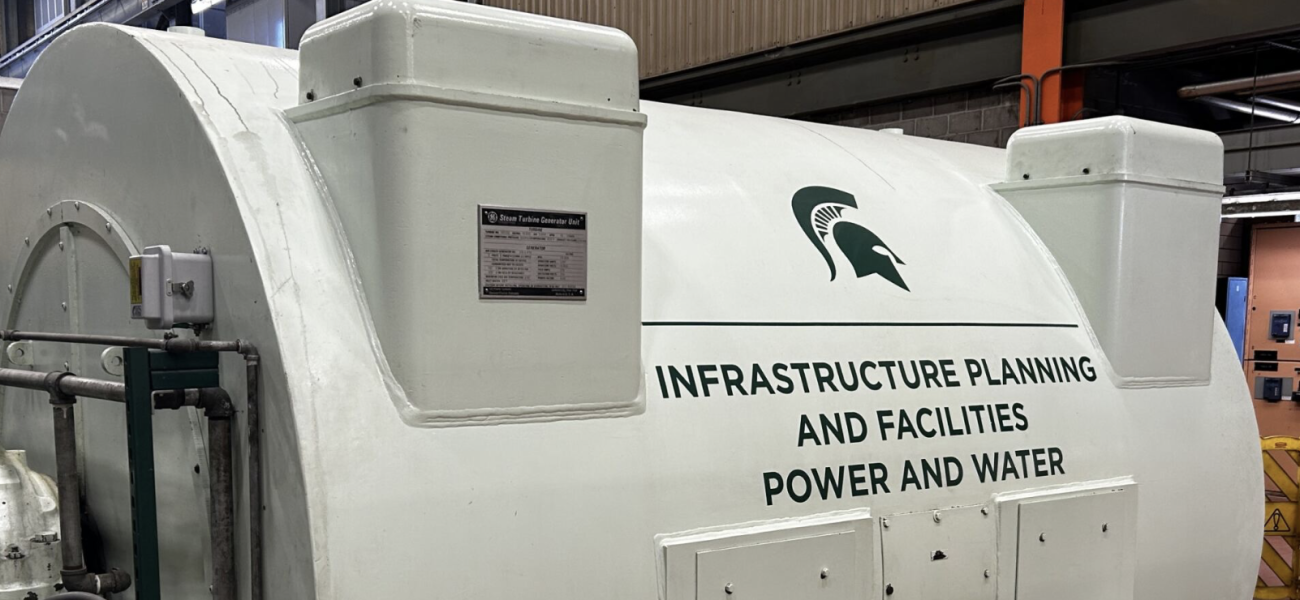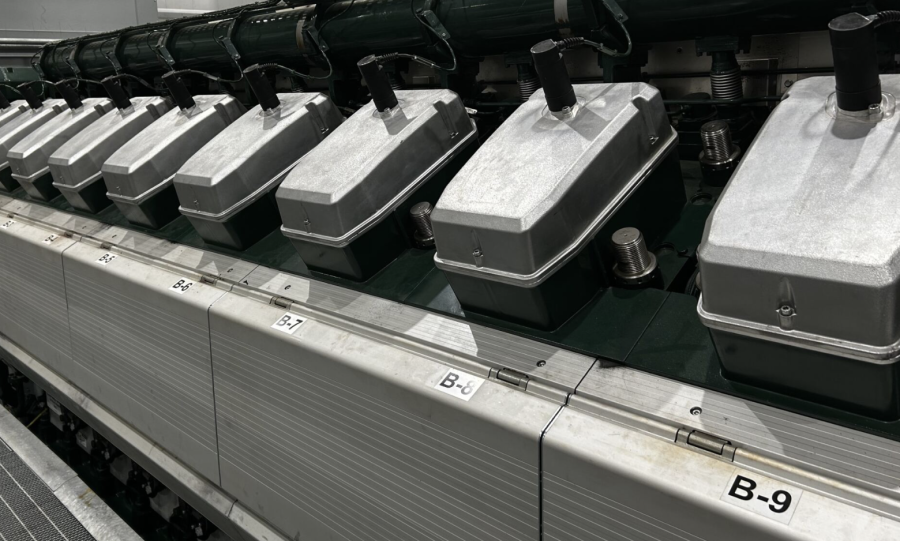Keeping MSU Running Around the Clock: Inside the Power and Water Plant

Tierra Nelson
August 15, 2025
For most of us, flipping on a light switch, turning up the heat, or filling a glass of water is effortless. But behind the scenes at Michigan State University, a dedicated team is working 24/7 to ensure those essential services are always ready when needed.
At the heart of that effort is MSU’s Power and Water Plant, which produces most of the electricity, water, and steam the campus relies on year-round. “Utilities aren’t something most people think about until they stop working,” said Plant Manager Nicholas Buchinger. “Our job is to make sure they never have to.”

Balancing Campus Needs
Campus utility demands shift throughout the year—steam usage peaks in January’s bitter cold, water usage spikes in the summer for irrigation, and electricity demand soars in late summer as students return and air conditioning units run full tilt. To keep things efficient, the team performs maintenance during lower-demand periods and maintains backup systems to avoid service interruptions.
For water, the plant can store up to two million gallons in the campus water tower, but steam and electricity must be produced in real time. “We monitor demand 24/7/365, making constant adjustments to ensure supply and demand are in balance,” Buchinger explained.
Teamwork in High-Demand Periods
When extreme heat or peak campus activity is expected, coordination across MSU is critical. IPF Building Performance Services alerts the plant when HVAC systems will be running harder, giving operators time to prepare. The team also stays vigilant with extra equipment checks, ensuring critical systems are ready for any challenge.
Behind the Power
Electricity at MSU comes from different sources: steam turbines powered by high-pressure boilers, a combustion turbine-a jet engine that turns a generator while also making steam, and large ship-style engines known as RICE units (reciprocating internal combustion engines), and power brought in from the electrical grid. Steam turbines generate both electricity and the lower-pressure steam used for heating and hot water, while RICE units focus exclusively on electricity.
Working in Extreme Conditions
High outdoor temperatures make plant work even more challenging—inside, it can be up to 20 degrees warmer than outside. To protect staff, the facility uses hydration stations, cooling areas, and fans to help maintain safety.
Upgrades for Efficiency
Recent additions, like the RICE facility and a low-pressure auxiliary boiler, allow the plant to match production more precisely to campus needs, increasing efficiency and avoiding unnecessary overproduction.

An Unseen but Essential Role
The T.B. Simon Power and Water Plant has been occupied 24/7 since 1965, with a diverse team of engineers, technicians, mechanics, chemists, and operations staff working together. “It’s not a glamorous job, but it’s an important one,” Buchinger said. “We keep things running around the clock, no matter what.”
From new buildings to seasonal shifts, the plant adapts constantly—collaborating with other MSU departments and recycling materials where possible, such as old copper pipelines. As Buchinger put it, “Utilities are a cornerstone of the world we live in, and we take pride in being part of the backbone that keeps MSU moving forward.”
